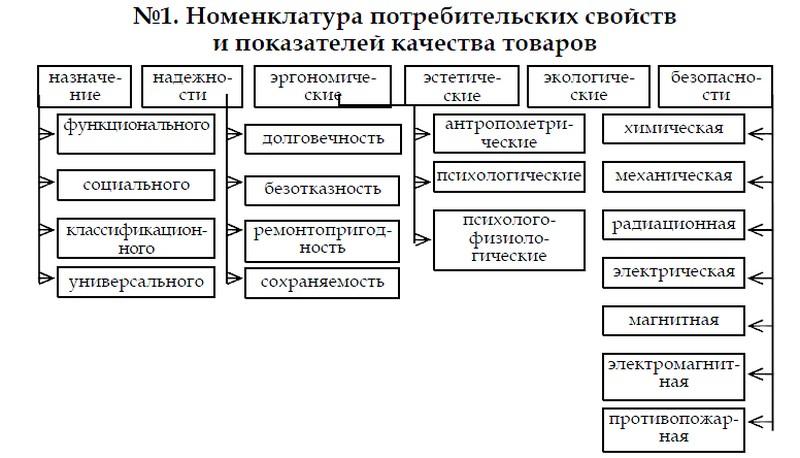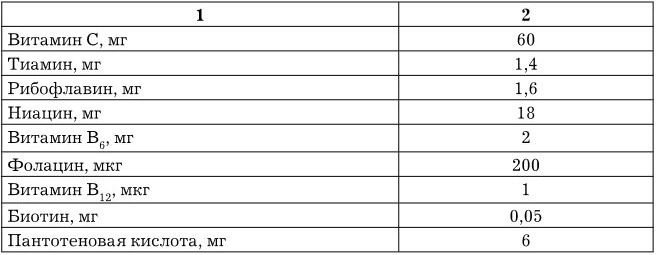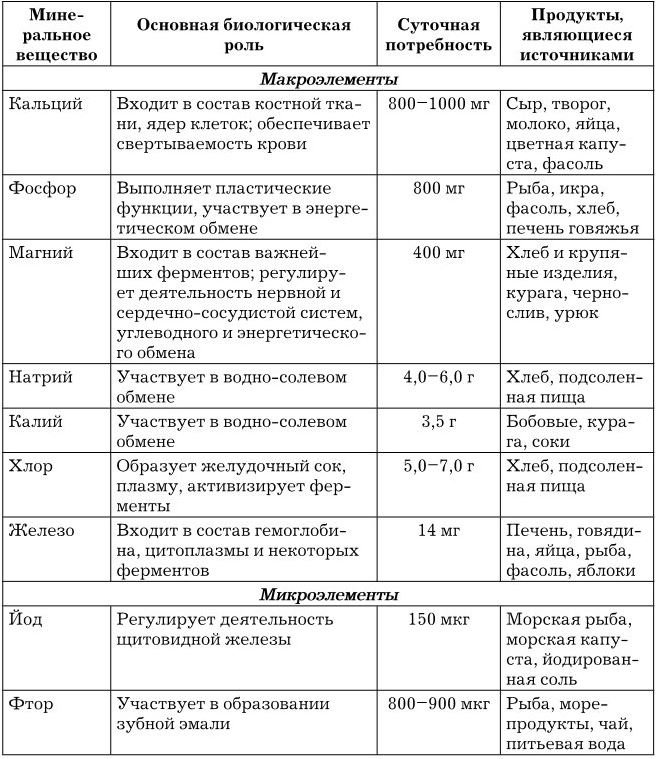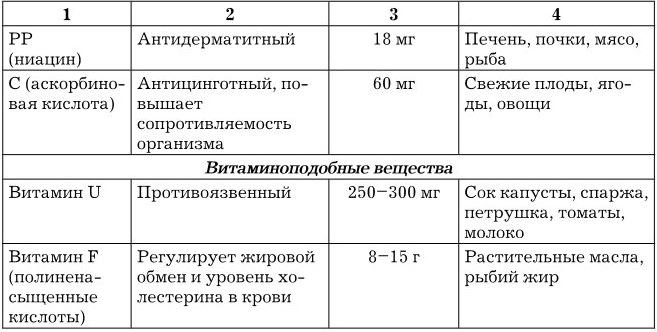Home / Complaints, courts, consumer rights / Consumer rights
Back
Published: 10/09/2018
Reading time: 5 min
0
820
According to the letter of the Ministry of Finance of the Russian Federation No. 03-07-04/03 dated March 31, 2010, the definition of “food products” includes any food products in natural or processed form that are in circulation and consumed by people as food. This category also includes bottled drinking water, alcoholic beverages, beer and beer mixes, soft drinks, chewing gum, food and dietary supplements. The description presented by the Ministry of Finance is used for state regulation of wholesale and retail trade.
- By what principle are food products classified?
- Distribution of food products by product groups
- Food quality criteria
From an economic point of view, food products are food products that satisfy human physiological needs for vital energy and essential substances, which are required for the normal functioning of the body.
According to GOST R 51074, food products include products of animal, plant, mineral and biosynthetic origin, intended for human consumption in fresh or processed form. This also includes any drinks, chewing gum, as well as certain substances used in the manufacture, preparation and processing of food products.
The group of food products does not include cosmetics, tobacco products, medicines and products.
Thus, food is food products that are considered as a market or economic category, as well as as a subject of commodity-money relations.
Assessing the quality of an item
From practice, all aspects of the trading process when carrying out purchase and sale transactions are based on their personal experience, the knowledge of relatives or friends, as well as advertising. This leads to the fact that the product that is advertised the most is sold out, even if its quality is not up to the mark. This fact negatively affects purchasing power, and also, in some cases, the health of consumers themselves.
Assessing the quality of a particular thing is very simple. You just need to determine its usefulness and value. This will happen if:
- the consumer recognizes the usefulness of the item he purchased;
- if the main function of the purchase coincides with its actual purpose;
- in the event of a situation where the consumer properties of things will be no worse and no better than what suits a particular consumer.
Unfortunately, it is not always possible to determine at first glance whether something is good. That's what assessment is for.
The modern domestic sales market allows its customers to independently assess the quality of the product. And this assessment will directly depend on factors such as:
- consumer's place of residence;
- age;
- property status;
- education;
- Kind of activity;
- family size;
- income level per family member;
- established ideas about the “fashionability” of goods.
For example, for a resident of a rural area, the priority will be to assess the vehicle’s cross-country ability rather than its external parameters.
Definition of the concept
The properties of a product mean the characteristic features that distinguish it from other similar products. They appear both during the manufacture of the item and during its operation. An important characteristic is the consumer properties of the product, which determine its usefulness during use. This is a key parameter for assessing the quality of a particular item.
The concept of “product” is multifaceted. This category includes not only physical objects, but also abstract goods such as services, ideas, etc. The concept is actively used in modern marketing, although it arose at the beginning of the development of human civilization. From the point of view of some concepts, it is commodity relations that are the basic source of technical progress and the development of the human community as a whole.
The need for an object is determined by its ability to satisfy certain needs. Useful parameters that arise during production and operation determine the consumer properties of a commercial product. This concept is also used in marketing and is key in the process of determining the quality of a product and the need for its improvement.
Actually, a consumer property means a characteristic that is revealed during operation or consumption and, accordingly, is used to satisfy needs. It should be emphasized that this refers not only to purely physical, material needs, but also to cultural needs.
Consumer properties should not be perceived as a monolithic value. In most cases, they consist of a large number of characteristics that appear in combination and affect the functionality of a particular item.

In modern marketing, consumer parameters are strictly defined and classified. Basically they can be divided into two groups. These are the characteristics:
- Food items.
- Non-food products.
Reference! Not all characteristics can be classified as consumer ones. For example, transportability is not included in this list.
The set of consumer properties characteristic of a particular item determines its quality.
This term refers to an indicator of a product that characterizes the degree of its suitability for meeting the needs determined by its purpose. The following indicators are used to determine the quality of an item:
- Characteristics that determine its purpose. In this case, we mean how well the product copes with the functions assigned to it.
- Reliability. This concept means the ability of a product to perform its functions for a certain period of time (shelf life), without additional modifications and changes, as well as without repair work.
- Certification. Compliance of the parameters and characteristics of the product with the standards established by government departments.
The consumer evaluates the quality of an item in accordance with the extent to which its real consumer characteristics are consistent with its functional purpose. This happens during operation.
Product certification
Certification is an action taken by a third party, which allows us to establish the conformity of all quality characteristics, as well as the overall quality of a particular product or service. In Russia, there are two types of certification: mandatory and voluntary.
Mandatory certification is carried out taking into account such important values and indicators as:
- health and life of citizens;
- environment protection;
- protection of personal property of citizens.
A voluntary type of certification provides the opportunity to independently determine the compliance of goods and services with GOSTs, technical specifications and other standards in any company.
A certificate obtained at the initiative of the manufacturer can equate the manufactured product with anything. This again creates a false perception of quality among the consumer. Accordingly, the presence of beautiful paper that does not reflect reality encourages the consumer to purchase a worthless product.
I would like to see such a document as confirmation of the real state of the goods.
Often people, having bought a product in a store, begin to realize that it either has serious flaws or is simply not suitable. Contacting the store about this often turns into torture. What can you count on in such a situation? Read about state duty refunds here.
Nutritional value of products
Food products have a certain nutritional value and taste properties. The nutritional value of products is understood as their biological and physiological value, energy capacity, digestibility, and harmlessness.
Biological value of products
The biological value of products is a balanced (in a certain ratio) content of essential amino acids, polyunsaturated fatty acids, lipids, polyphenolic compounds, and vitamins in products.
Product quality indicators
The quality indicators of the product must be carefully examined, and based on certain criteria, admission to the market is made. Using this procedure, you can simultaneously highlight only high-quality and good products.
It is the voluntary type of certification that becomes the most important element in the development of all social production. Therefore, government agencies have a clearly defined range of tasks so that the consumer has the correct understanding of the product being consumed.
Domestic realities of assessing the quality of goods, inspection and examination - their differences
In themselves, these two concepts are very different from each other and have different legal natures. A store that accepts a claim from a buyer regarding the quality of an item purchased must carry out a quality examination at its own expense. This obligation is provided for in Article 21 of the federal law “On the Protection of Consumer Rights”.
Complaint about product quality
The claim must be made in writing. This application must contain some mandatory details, such as:
- details (registration and address details of the seller);
- buyer information, including contact number;
- information about the purchased product;
- information about identified defects/defects;
- the essence of the claim;
- requirement for an examination and mandatory notification of the buyer’s side about the selected expert institution and the date/time of the procedure;
- other information (depending on the situation);
- The application must include copies of documents confirming the fact of acquisition.
Commodity research of homogeneous groups of food products Team of authors, 2014
1.1. Basic concepts. Chemical composition of food products
Definitions of the main terms used in the study of the discipline “Commodity research of homogeneous groups of food products” are established by the technical regulations of the Customs Union “On the safety of food products” (TR CU 021/2011), approved by decision of the Customs Union Commission dated December 9, 2011 No. 880, which comes into force effective from July 1, 2013
Food products
- products of animal, plant, microbiological, mineral, artificial or biotechnological origin in natural, processed or processed form, which are intended for human consumption.
Processing (processing)
of food products includes heat treatment (except freezing and cooling), smoking, canning, ripening, fermentation, salting, drying, pickling, concentration, extraction, extrusion, or a combination of these processes.
Food products include specialized food products, all drinks - alcoholic, non-alcoholic (including drinking water packaged in containers), chewing gum and any substances used in the manufacture, preparation and processing of food products (food raw materials, food and biologically active additives and etc.).
Food (food) raw materials
- products of animal, plant, microbiological, mineral, artificial or biotechnological origin and drinking water used for the production (manufacturing) of food products.
To give food products certain organoleptic and (or) technological properties, as well as to improve their preservation, food additives
- any substances (or mixtures of substances) with or without their own nutritional value, usually not consumed directly by humans as food, deliberately introduced into food products for technological purposes during its production, transportation and storage, which leads or may lead to the fact that the data substances or products of their transformations become components of food products. A food additive can perform one or more technological functions. Depending on the functions performed, there are dyes, preservatives, antioxidants (antioxidants), consistency stabilizers, emulsifiers, acidity regulators and leavening agents, flavor and aroma enhancers.
To enrich the diet with biologically active substances, biologically active additives (BAA)
- natural and (or) biologically active substances identical to natural ones, as well as probiotic microorganisms intended for consumption along with food or for inclusion in food products.
Probiotic microorganisms
are live non-pathogenic and non-toxigenic microorganisms supplied as part of food products to improve (optimize) the composition and biological activity of the protective microflora of the human intestine.
If food products are intended for certain categories of consumers, then, given their special composition and properties, they are classified as specialized food products
. Specialized food products can be intended for baby food, for nutrition of athletes, for dietary preventive or dietary therapeutic nutrition, for other categories of consumers, taking into account their individual needs.
Food products satisfy the needs of the human body for energy, plastic and biologically active substances, participate in the formation of immunity, regulate metabolism, and ensure satisfaction of organoleptic sensations. These functions are carried out by various nutrients (nutrients)
, which are components of food products that are used by the human body as sources of energy, sources or precursors of substrates for the construction, growth and renewal of organs and tissues, the formation of physiologically active substances involved in the regulation of life processes.
Physiological scientists are developing physiological norms for the consumption of individual nutrients.
Norms of physiological needs for energy and nutrients
- the level of daily consumption of nutrients sufficient to satisfy the physiological needs of at least 97.5% of the population, taking into account age, gender, physiological state and physical activity.
The average food intake per day is about 800 g (without water) and about 2000 g of water. In table Table 1.1 shows the average daily requirement of an adult for basic nutrients and energy in accordance with the provisions of the technical regulations of the Customs Union “Food products in terms of their labeling” (TR CU 022/2011), approved by decision of the Customs Union Commission dated December 9, 2011 No. 881 , effective July 1, 2013.
Table 1.1
Average daily requirement for essential nutrients and energy

* When indicating the energy value in joules, the ratio 1 cal is equal to 4.1868 J is used for conversion.
** 5 mcg cholecalciferol - 200 IU vitamin D.
All substances included in food products can be divided into inorganic
(water and mineral elements), and
organic
(proteins and other nitrogen-containing substances, fats and fat-like compounds, carbohydrates, vitamins, enzymes, organic acids, phenolic compounds, coloring and aromatic substances).
Water
is included in all food products, but in different quantities. It makes up about ⅔ of the human body weight and ensures the most important biochemical and physiological processes in the body. Loss of water by the body in an amount of 6–8% of body weight leads to serious physiological disorders, and over 10–12% leads to changes incompatible with life. The needs of the human body for water are satisfied through the consumption of drinking water and drinks, food products containing water, as well as through water formed in tissues during the biological oxidation of various substances (proteins, fats, carbohydrates, etc.).
Food products with high water content include fresh fruits and vegetables (65–95%), milk (87–90%), fish (62–84%), meat (58–74%), baked bread (42–51%). ). These products are unstable during storage, since water is a favorable environment for the development of microorganisms and the occurrence of biochemical, chemical and other processes. They are quickly subject to various types of spoilage, and to extend their shelf life they need canning.
Flour, cereals, pasta (12–15%), tea and coffee (3–8%), starch (13–20%), and dried fruits (12–25%) are characterized by low water content. There is very little water in sugar, salt, vegetable oils and rendered animal fats (tenths of a percent). These products are preserved better, but, having high hygroscopicity (the ability to absorb and retain water vapor from the surrounding atmosphere), they are easily moistened, which leads to loss of flowability, caking, clumping and other undesirable changes in quality.
When choosing storage conditions for food products, they strive to create and maintain at a constant level such relative air humidity that would not cause drying or humidification processes. The water content in products is an important indicator that affects their nutritional value and shelf life. Therefore, for many food products, the regulatory and technical documentation establishing quality requirements provides indicators - mass fraction of moisture (in %, no more) or humidity (in %, no more).
Minerals
participate in the plastic processes of the body (part of tissues, cell nuclei, cytoplasm), in water-salt metabolism, maintaining acid-base balance, osmotic blood pressure, and ensure the occurrence of many enzymatic processes.
The total mineral content of most foods averages 1%. All mineral elements are divided into three groups: macroelements
(Ca, P, Mg, Na, K, Cl, S, Fe), contained in food in relatively large quantities (more than 1 mg%),
microelements
(Zn, Cu, I, F, Mn, Cr, Ni, etc. ), the concentration of which is low (less than 1 mg%) and
ultramicroelements
(Sn, Pb, Hg, etc.), present in products in “trace” quantities. The characteristics of some macro- and microelements are given in table. 1.2.
Table 1.2
Characteristics of basic macro
—
and microelements

The content of mineral elements in the ash remaining after the combustion of food products is determined, which is why they are also called ash elements. For many food products the following indicators are regulated:
• ash content (in %, no more), mass fraction of mineral impurities (in %, no more), mass fraction of total ash (in %, no more) - for cereals, flour, starch, sugar, jam, jam, tea, etc. .;
• mass fraction of ash insoluble in 10% hydrochloric acid (in %, no more) - for canned fruits and vegetables, starch, chocolate, etc.;
• mass fraction of metallomagnetic impurities (in mg per 1 kg of product or in %, no more) - for cereals, flour, pasta, tea, coffee, etc.
Exceeding the established limits for these indicators reduces the grade of products and, as a rule, indicates poor purification of raw materials, contamination of the product with mineral impurities, and the presence of difficult-to-digest components (for example, grain shells - for cereals and flour). Some mineral elements (arsenic, mercury, cadmium, lead, etc.) have pronounced toxicity, therefore regulatory documents establish acceptable levels of their content.
Squirrels,
or
proteins,
are the most valuable components of food products.
They perform the most important biological functions: catalytic
(enzymes) - ensure the flow of biochemical processes in the body,
structural
(collagen, fibroin) - form the basis of cell membranes,
regulatory
(hormones) - regulate hormonal metabolism,
protective
(immunoglobulins, interferon) - form immunity,
motor
(actin, myosin) - are part of muscle tissue,
transport
(hemoglobin, myoglobin), etc.
By their chemical nature, proteins are high-molecular biopolymers, the molecules of which are built from amino acid residues. Amino acids that make up proteins are divided into non-essential
, which can be synthesized in the human body from other substances, and
irreplaceable (essential
), which must enter the body in finished form (there are only 8 of them, and in children - 9).
The biological value of proteins is determined by the balance of amino acid composition. If a protein contains all the essential amino acids, the protein is called complete
.
Most animal proteins are complete - milk proteins (casein, albumin, globulin), meat and fish (myosin and actin), eggs (ovalbumin, ovoglobulin), as well as some plant proteins (potatoes, wheat, rye, buckwheat, oats). Proteins that do not contain at least one essential amino acid are called incomplete
. Incomplete proteins include animal proteins of connective tissue (collagen, elastin), as well as many proteins of plant origin (millet, corn, some legumes).
Food products such as meat and fish (on average 15–20%), cheeses and curd products (15–30%), eggs (about 13%), soybeans and soy products (30–35%) are distinguished by their high protein content. The protein deficiency in some food products (baked goods, cereals, etc.) is compensated for by introducing protein enriching additives into their recipes.
Some properties of proteins underlie food production technology and are also taken into account during storage.
Most proteins are hydrophilic compounds. Ability
proteins to
water binding and swelling
is used when kneading dough in bakery, production of crackers, lamb and pasta, in sausage manufacturing technology. During long-term storage, the ability of proteins to swell decreases: the cooking time of legumes until cooked increases, and yogurt and other liquid fermented milk products separate.
Heating at temperatures above 50–60 °C
leads to a change in the structure of most proteins - they
coagulate (denature, coagulate)
and lose their hydrophilicity. This property of proteins is used in the production of cheeses, cottage cheese and curd products, in baking bread, drying pasta, milk, fish and other products. It underlies some methods for determining the protein content of foods.
Under the action of protease enzymes, proteins undergo hydrolytic cleavage
(hydrolysis or proteolysis) to form peptides and amino acids. At the initial stages, hydrolytic processes have a beneficial effect on the formation of the quality of meat, fish, and cheeses, as they ensure their maturation.
Under the influence of putrefactive microorganisms, proteins can be destroyed into simpler compounds - amines, fatty acids, phenols, hydrogen sulfide, indole, skatole, mercaptan, etc., many of which are strong poisons. The product acquires a sharp, unpleasant odor, its consistency and color change. The process of deep breakdown of proteins under the influence of putrefactive bacteria is called putrefaction.
and is the main cause of spoilage in high protein foods.
Contains non-protein nitrogen-containing compounds
food products include products of hydrolysis or incomplete synthesis of proteins (peptones, polypeptides, amino acids), ammonia compounds, alkaloids (caffeine, theobromine), nucleic acids, nitrates and nitrites. Their role in shaping the quality of food products is different: some ammonia compounds cause a specific odor of products (for example, trimethylamine is the main component of the odor of sea fish), tea and coffee alkaloids have high physiological activity - they have a stimulating effect on the nervous and cardiovascular systems, nitrites in small quantities are added when salting meat, minced sausage to form color, etc.
Fats,
or
lipids
(from the Greek
lipos
- fat), participate in the plastic processes of the body, are a source of energy (the oxidation of 1 g of fat produces 9.0 kcal of energy), fat-soluble vitamins (A, D, E, K) and essential polyunsaturated fatty acids (linoleic, linolenic, arachidonic), which regulate fat metabolism and cholesterol levels in the blood.
Fats by origin are divided into animal and vegetable, their optimal ratio in the diet is 2: 1. Cow butter (62–99%), pork (10–37%), some types of marine animals and fish (up to 30%), and vegetable - various types of vegetable oil (99.7%), nuts (40–70%), and oil seeds.
Edible fats such as margarine (40–82%) and mayonnaise (30–67%) have a mixed fat composition.
By chemical nature, fats are a mixture of esters of trihydric alcohol glycerol and fatty acids.
The composition of fats can include saturated (saturated) fatty acids (lauric, myristic, palmitic, stearic, etc.) and unsaturated (unsaturated) fatty acids (oleic, linoleic, linolenic, arachidonic, etc.), which have double bonds in the molecule. Unsaturated fatty acids have a lower melting point and exhibit higher reactivity compared to saturated acids. The physical and chemical properties of fats depend on their fatty acid composition.
Fats containing saturated fatty acids with high molecular weight have a high melting point
and solid consistency (lamb fat melting point = 44–50 °C).
Most vegetable fats, as well as some animal fats (for example, fats of marine animals and fish) are characterized by a high content of unsaturated fatty acids; accordingly, they have a low melting point and liquid consistency at temperatures close to 0 ° C and below (melting temperature of sunflower oil = - 21 °C). The digestibility of fats primarily depends on their melting temperature: the higher it is, the more difficult it is for the fat to be absorbed in the body.
Fats are insoluble in water
, but can form emulsions with it in the presence of emulsifiers (production of margarine, mayonnaise).
Fats dissolve in organic solvents
(gasoline, chloroform, petroleum ether, etc.). The extraction method for obtaining vegetable oils, as well as the method for determining the mass fraction of fats in food products, are based on this property.
Liquid fats can turn into solid fats as a result of hydrogen saturation of unsaturated fatty acids. This process occurs under harsh conditions (at a temperature of 200–220 °C, in the presence of a nickel catalyst) and is called hydrogenation of fats
. The resulting hydrofats, or lards, are the main raw materials in the production of margarine, culinary, confectionery and baking fats.
During storage, a decrease in the quality of fats occurs as a result of their hydrolysis and oxidation.
Hydrolysis of fats
is the initial stage of their damage. Under the action of lipase enzymes in the presence of water, fats are broken down into glycerol and free fatty acids, which are subsequently subject to oxidative deterioration. For many fat-containing products, the standards establish a quality indicator - the acid number, which indicates the degree of freshness of the fat.
Oxidation
First of all, unsaturated fatty acids that are part of fats are affected; they add oxygen at the site where the double bond is broken. Accumulating toxic oxidation products - peroxides and hydroperoxides (at the initial stage), aldehydes, ketones, hydroxy acids (during deep oxidation) - give fats an unpleasant rancid odor and a sharp “scratching” taste. The reaction accelerates with increasing temperature, under the influence of light energy, in the presence of moisture and metals of variable valency. Antioxidants (antioxidants) slow down oxidative processes, which can be divided into natural (tocopherols, many phenolic substances, vitamin C, etc.) and synthetic (ionol, butyloxyanisole - BOA, butyloxytoluene - BOT, propyl gallates, etc.). To prevent oxidative spoilage of fats, fat-containing products should be stored in sealed containers at low temperatures, avoiding exposure to direct sunlight.
In addition to typical fats, food products contain fat-like compounds (lipoids)
having a more complex structure -
phospholipids
(lecithins, cephalins),
sterols
(cholesterol, ergosterol, etc.),
waxes
. Phospholipids are the main components of cell membranes and ensure their semi-permeability. Cholesterol is part of steroid hormones and bile acids. Ergosterol is converted into vitamin D in the body under the influence of ultraviolet rays. Waxes of plant and animal origin perform protective functions. Lecithin is widely used in the food industry as an emulsifier (in the production of chocolate, margarine, ice cream).
Carbohydrates
are formed during photosynthesis in green plant leaves from carbon dioxide in air and water. They account for up to 90% of the dry matter of plants and about 2% of the dry matter of the animal body. In terms of volume of consumption and provision of caloric content of the diet, they occupy first place among other food components. In addition to energy, carbohydrates also perform other functions in the body: they are part of the most important cellular structures (nucleic acids, antibodies, hormones, enzymes), and participate in the regulation of many biochemical processes. At the same time, excess intake of carbohydrates leads to obesity, nervous system disorders, and allergization of the body.
The main source of carbohydrates are plant products. Among them there are those that consist almost entirely of carbohydrates - sugar, honey, starch.
In some products, carbohydrates account for the bulk of dry matter - flour, cereals, confectionery, fruits and vegetables.
According to the accepted classification, carbohydrates are divided into three large classes: monosaccharides
- simple sugars (glucose, fructose, galactose, xylose, arabinose, etc.);
oligosaccharides
- contain from two to ten monosaccharide residues (disaccharides - sucrose, maltose, lactose, etc., trisaccharide - raffinose, tetrasaccharide - stachyose, etc.);
polysaccharides
are polycondensation products of monosaccharides (starch, glycogen, pectin, cellulose (or fiber), hemicellulose, inulin, gums, etc.).
According to their digestibility in the body, carbohydrates are divided into digestible
(mono-, oligosaccharides, starch and its breakdown products - dextrins, glycogen) and
indigestible
(fiber, hemicelluloses, pectin substances).
The main digestible carbohydrates are starch and sucrose. Starch accounts for about 80% of all carbohydrates consumed by humans. Sources of starch are cereals, pasta and flour products, potatoes, other vegetables and fruits. Indigestible carbohydrates are also called dietary fiber
or
ballast substances
. They perform an important physiological function - they cause intestinal peristalsis, thereby ensuring the movement of food through the gastrointestinal tract.
Carbohydrates play an important role in the formation and preservation of the quality of food products. Some properties (transformations) of carbohydrates are used in food production and storage technology:
• hydrolysis
(cleavage with the participation of water) of starch underlies the production of starch products (glucose, molasses, sugar syrups), alcohol (in the preparation of raw materials for fermentation), beer (in the production of beer wort), bread (the process of preparing dough) and other products; hydrolysis of pectin substances occurs during the ripening and ripening of fruits and vegetables; hydrolysis of sucrose to form invert sugar is used in the confectionery industry and in the production of soft drinks;
• caramelization reaction
sugars, which occurs when heated above 160 °C and is accompanied by the formation of brown-colored substances with a caramel aroma, is used in the production of sugar coloring (a natural dye used for coloring soft drinks, cognacs), occurs when baking bread, roasting coffee beans, when preparing fried meat , fish and other products;
• melanoid formation reaction (Maillard reaction)
- the reaction of interaction of carbonyl groups of reducing sugars with amino groups of proteins, amino acids, accompanied by the accumulation of dark-colored substances (melanoidins) and volatile aromatic compounds - occurs during baking, drying malt, long-term heat treatment of milk (the color of baked milk, fermented baked milk);
• ability of monosaccharides to ferment
under the influence of microorganisms (yeast, lactic acid bacteria, etc.) is the basis of the technology for making bread, fermented milk products, cheeses, beer, wine, kvass and other products;
• hydrophilicity
- ability to bind water - determines the high hygroscopicity of many carbohydrates, which underlies undesirable changes in quality during storage of bulk food products (flour, cereals, starch, sugar, salt, etc.) - loss of their flowability, clumping, caking;
• the ability of starch grains to swell in cold water and form a starch paste in hot water
used in food production and provides culinary and technological properties of certain food products (flour, cereals and pasta); When starch grains age, their ability to retain moisture is lost (after long-term storage, the boilability of cereal products deteriorates and the baking properties of flour are reduced).
Vitamins
are bioregulators of various processes occurring in a living organism. For normal human life they are needed in small quantities.
The body's total daily requirement for various vitamins is 0.1–0.2 g. Most vitamins are not synthesized by the human body, so they must be supplied with food. Based on solubility, vitamins are classified into two groups: fat-soluble and water-soluble. Characteristics of the most important vitamins and vitamin-like substances are given in Table. 1.3.
Table 1.3
Characteristics of the main vitamins and vitamin-like substances

Enzymes
- These are biological catalysts of a protein nature that accelerate the occurrence of various biochemical reactions. The endogenous enzymes of food products can have both positive and negative effects on their quality. For example, the beneficial effects of enzymatic processes are observed during the ripening of flour, fish and meat during salting, during the ripening of fruits and vegetables, and during the production of malt and black long tea. Deep enzymatic processes lead to spoilage of food products (autolytic spoilage of meat, maceration - destruction of tissues - fruits and vegetables, souring of beer, etc.). To extend the shelf life of food products, various preservation methods are used that reduce the activity of endogenous enzymes.
Enzyme preparations are widely used in the food industry - in baking, brewing, in the production of starch products, alcohol, fruit juices, wines, flour confectionery products, and rennet cheeses. Enzymatic methods of analysis are used in studying the quality of food products.
Organic acids
impart a sour taste to food products, participate in the formation of aroma (volatile acids), and are used in the food industry as preservatives (acetic, sorbic, benzoic acids). In addition to amino acids and fatty acids, which are part of proteins and fats, respectively, the most common are malic, citric, tartaric, lactic, acetic, oxalic, formic, quinic, succinic, fumaric, benzoic and sorbic acids.
The total acid content in food products varies from 0.1% (potatoes, many vegetables) to 6% (lemons). When storing products, the acid content, as a rule, increases and often leads to their spoilage: souring of milk, beer, acetic acid souring of wines, juices, etc. For many food products (milk, fermented milk products, beer, grape wines, bread, etc. .) the list of physicochemical quality indicators includes: acidity, titratable acidity, volatile acidity, active acidity (pH).
Phenolic compounds
found mainly in products of plant origin: fruits and vegetables, tea, coffee, chocolate, wines, cognacs, etc. They give many products a tart, astringent taste, and participate in the formation of their color and aroma. Phenolic compounds are classified as physiologically active substances: they have bactericidal properties, exhibit P-vitamin activity, and are strong antioxidants.
This group of compounds includes phenolcarboxylic acids
(hydroxybenzoic, gallic, vanillic, lilac, cinnamon, coumaric, etc.),
coumarins
and their derivatives,
flavonols
(quercetin, myricetin, etc.),
anthocyanins
and
leukoanthocyanins, catechins, tannins,
or
tannins
(are products of the polymerization of catechins and leukoanthocyanins ).
Phenolic compounds have the following properties:
• when interacting with proteins, they form insoluble compounds (the property is used in the clarification of juices and wines);
• when oxidized, they produce brown-colored products (when drying and canning, fruits and vegetables are blanched with hot steam or fumigated with sulfur dioxide to inactivate the enzymes that catalyze this process);
• are destroyed when frozen (the astringency decreases when fruits and vegetables are frozen).
Dyes
, included in food products, can be divided into natural and synthetic dyes.
Natural
endogenous coloring substances of food products include:
chlorophylls -
green pigments (the color of leafy greens, cucumbers, olive oil, etc.),
carotenoids
- yellow, orange and red pigments (the color of carrots, red peppers, egg yolks, etc.). ),
flavonoids
- yellow-brown pigments (the color of onions, tea, etc.),
anthocyanins
- red and blue pigments (the color of the skin of red grapes, black currants, dogwoods, etc.) and other pigments. Dyes isolated from natural sources are used in the food industry to color various food products. Natural dyes are unstable compounds - they are sensitive to heat, the action of atmospheric oxygen, acids, alkalis, microorganisms, therefore, a change in the color of food products during storage is the first sign of their spoilage. To increase the durability of the natural color of food products, appropriate food additives are used - stabilizers and color fixers.
List of synthetic
dyes approved for use in the Russian Federation in the production of food products are regulated by Sanitary and Epidemiological Rules and Standards SanPiN 2.3.2.1293-03 “Hygienic Requirements for the Use of Food Additives.” The following dyes are prohibited for use in food production in the Russian Federation: citrus red 2 (E121), amaranth (E123) and red 2G (E128).
Contains aromatic substances
a food product includes aromatic components of raw materials, substances formed during the manufacturing process (during heat treatment, drying, etc.) and during storage of the product, as well as specially added food flavorings. Thus, the aromatic substances of roasted coffee include 370 different compounds, strawberries - 256, bread - 174, cognac - 128, poultry meat - 189.
Typically, one or more compounds determine the main aroma of a food product, while the rest are involved in the formation of various “tones”. The main aroma of lemons is given by citral, vanilla - vanillin, garlic - allyl sulfide, cumin - carvone. By chemical nature, aromatic substances belong to different classes of compounds: terpenoids, alcohols, volatile acids, simple and esters.
Food flavorings
- these are complex compositions of fragrant substances of natural, identical to natural or artificial origin. They may contain up to 20–30 or more components of various chemical natures.
During long-term storage of food products, their smell (aroma) undergoes significant changes due to the volatilization of their own aromatic substances and the absorption (sorption) of odors from the surrounding space. To prevent these unwanted changes, sealed packaging is used.
The qualitative composition and quantitative ratio of substances contained in food products determine their nutritional value, safety and shelf life.
Product quality standards
An objective assessment of the quality of a product is given to a purchase only on the basis of a “quality index”, which is determined using international standards in this area. This rating is a certain amount of points that are assigned to a product based on a standard set of indicators.
It should be noted that quality standards and indices play a huge role not only in competition and market management, but also in the life of an individual consumer.
| n/a | Introduced standard | Positive result |
| 1. | Standard for emission levels of exhaust gases in domestic and foreign vehicles (USA) | Eliminating smog |
| 2. | Quality level of milk and dairy products (Germany) | 1953-1983 – halving the number of livestock of farm enterprises, while increasing milk yield by 4 times, which led to an increase in farmers’ incomes |
With our naive trust in big names of manufacturing companies, we often remain blind to the level of quality of the goods they offer. And we often don’t notice domestic manufacturers or companies with less popular “brands” that offer higher quality products. Be more careful when choosing a particular purchase. Happy shopping!!!











